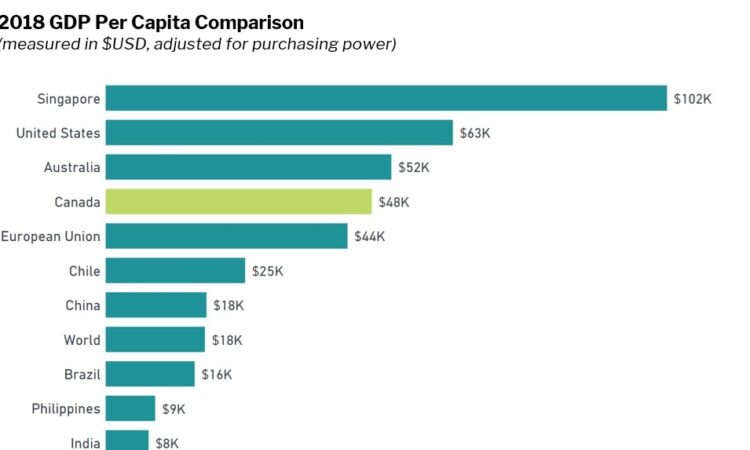
Economic Performance: A Comparative Analysis of US and EU

In the world of economics, measuring the performance of countries or regions is a topic of ongoing debate. One such comparison that frequently crops up is that of the long-term performance of the US economy and Europe. The commonly used parameters such as market exchange rates and purchasing power parity (PPP) have shown limitations in accurately reflecting the economic outcomes. The former is susceptible to exchange rate fluctuations, while the latter involves complex calculations. In light of these challenges, a more straightforward and possibly accurate method is suggested – real GDP growth in national currency.
Evaluating the US and EU Economies
When this measure is used, it is evident that the US GDP has outpaced the EU’s in growth over the past two decades. However, when considering the output per capita, the EU and the US have expanded at a similar pace. The reason for this parity is attributed to the EU’s stagnant population growth compared to the US’s increasing one. Nevertheless, the US consistently outperforms the eurozone and the UK in per capita output growth rates.
Disparity Within the EU and US
The EU average, however, is skewed by the growth of poorer nations playing catch-up. Countries in Central and Eastern Europe have experienced significant growth, thus influencing the overall EU average. On the other hand, regional differences within the US are also noteworthy. Some states have shown exceptional growth rates. For instance, the Federal Bureau of Economic Analysis reported that the real GDP growth in Kansas from July to September was 9.7%, the highest in the country. Other states such as Missouri, Colorado, Oklahoma, and Nebraska also reported substantial growth, whereas Arkansas lagged with the lowest growth at 0.7%.
Factors Influencing Growth
In conclusion, various factors can contribute to the growth of a nation’s economy. These include geopolitical events such as Russia’s invasion of Ukraine causing an energy shock, the European sovereign debt crisis, and fiscal stimulus in the US. These factors have contributed to the stronger growth of the US and may continue to impact Europe’s growth potential in the future.






